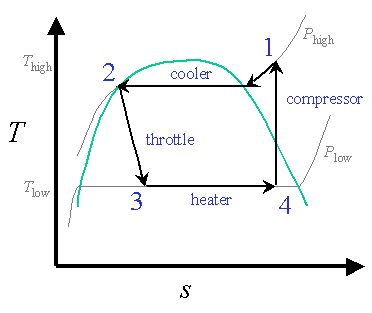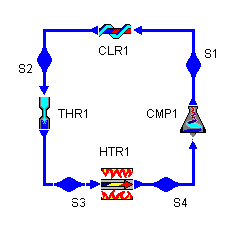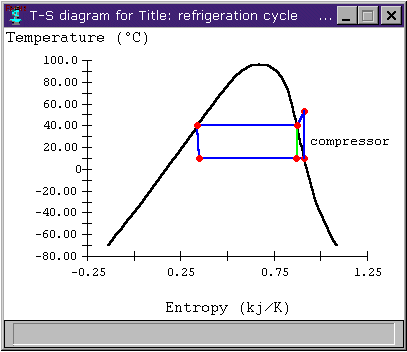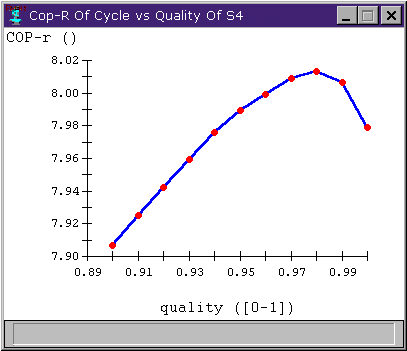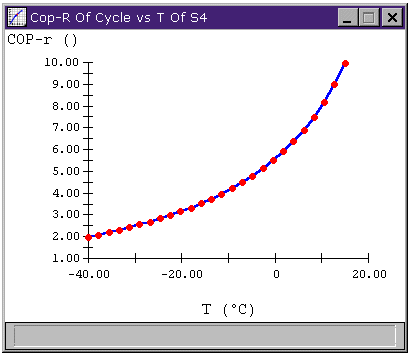Types Of Insulation For Refrigeration Applications
Refrigeration systems typically operate in the range of 20°F (for Freon systems) to as low as -50°F (for ammonia systems). They can use a variety of refrigerants and fluids in addition to Freon and ammonia, including glycol, brine, and other specialty fluids. Copper, iron, stainless steel, or other piping materials may be used to carry the cooling medium. Typical applications include those in supermarkets; beverage-dispensing lines; chillers; and food processing, freezing, and storage facilities (for example, meat processing and dairy, vegetable, and frozen-dinner cases). Other applications include those at ice rinks and morgues, as well as various unique applications. All of these applications share common concerns regarding condensation control and long-term reliability, but they also have particular issues with installation, required thickness, and the environmental conditions in which they operate. Guidelines for insulation selection, thickness, installation, and maintenance are found in the2006 ASHRAE Handbook–Refrigeration in Chapter 33, “Insulation Systems for Refrigeration Piping.”
Reliability should be the primary concern when considering the design and installation for any application. Design must consider factors including the application temperature, environmental considerations, consequences if a failure occurs, and expectations of the job by the owners (longevity of the system, aesthetics, etc.). Installation considerations include environmental conditions during installation, time frame allotted to complete the job, and worker training.
Below-ambient refrigerant lines are installed primarily to accomplish the following:
Minimize heat gain to the internal fluids
Control surface condensation
Prevent ice accumulation
Operation is generally continuous, so the vapor drive is unidirectional. Water vapor that condenses on the pipe surface or in the insulation remains there. The vapor retarder must be continuous and effective 100 percent of the time to limit the amount of vapor entering the system. The following are some important features of the insulation in various refrigeration applications:
Thermal conductivity, or k-value
Water vapor transmission (WVT) properties
Water absorption properties
Coefficient of thermal expansion
Moisture wicking
Fire and smoke performance to meet building codes
The ASHRAE handbook recommends the following insulation materials for refrigeration applications: cellular glass, closed-cell phenolic, flexible elastomeric, polyisocyurante, and polystyrene. All of these materials have one property in common: all are closed-cell foam materials, which means they will have good WVT and low water absorption characteristics.
In all cases, the entire system (seams, butt joints, and termination points) must be completely sealed with adhesives to protect against air intrusion into the system, which would carry moisture and result in condensation between the cold pipe and the insulation. Relying on a single, concentrated vapor retarder is not recommended. Generally, closed-cell foam insulations are used for these applications. Seams should be minimized. On multilayer systems, the seams should be staggered. Taped seams are only allowed as a complimentary closure system.
Supermarkets are one of the biggest and most noticeable applications for refrigeration systems. They face several issues, including changes in refrigerant, colder line temperatures, higher temperature hot gas defrost cycles, changing store designs, and pressures to reduce installation time to decrease store build time. Chapter 16 in the ASHRAE handbook, titled “Retail Food Store Refrigeration and Equipment,” details many of the issues related to this market segment. Mandated changes in refrigerants are resulting in colder line temperatures, which require increased insulation thickness to prevent condensation.
In typical conditions, a 1-inch thickness is the standard; however, in some cases where humidity is high (over 80 percent), a 1½-inch thickness may be used. (See “Insulation Thickness Versus Design Relative Humidity.”) Availability of 1½-inch wall elastomeric insulation that has a 25/50 rating when tested according to ASTM E 84 is a new development on the market. This eliminates the need for sleeving materials to obtain the 1½-inch thickness.
Hot gas defrost cycles require insulation products to withstand spike temperatures up to 250°F. Open-ceiling store designs are mandating a change from the standard black insulation to a white product for better paint coverage and appearance. The installation procedures used on supermarket applications require that copper pipe (20-foot sections) be insulated on the floor and then taken to the ceiling and hung. To expedite this process and eliminate seams, many installers have gone to 18-foot coils of insulation that can be easily slid onto the 20-foot copper lengths. The reduction in seams saves time and improves the reliability of the job.
Refrigeration piping on most supermarkets is found inside, but some stores are designed with 90 percent of the piping on the roof. Some elastomeric insulation products are being promoted as ultraviolet (UV) resistant and acceptable for use outdoors without the additional protection of coatings, jackets, or cladding materials. But UV protection is not the only issue when it comes to outdoor applications. Mechanical abuse (by birds, cats, people, etc.) and environmental abuse (by hail, sand, dirt, wind, rain, etc.) play a role in the reliability and longevity of the insulation system. For optimum performance, coatings, jacketing, or cladding should be used for outdoor applications.
The insulation system installed on a supermarket refrigeration system must be highly reliable, as it will operate 24 hours a day for up to 10 years. System failure may result in a large loss of perishable foods. Closed-cell elastomeric materials have been used in this application for many years because they are extremely reliable and cost-effective. It is a primary product used for supermarket refrigeration applications because of its low WVT, allowable use temperature range, and ease of installation.
Another rather unique, behind-the-scenes refrigeration application is in beverage-dispensing units for large stadiums or coliseums, where satellite food court areas are all supplied from a central unit. In this case, multiple lines are bundled together and insulated with a single large-inner-diameter insulation coil. This keeps all the lines together and saves materials, space, and installation time. The coils are produced in long lengths to reduce seams, which also saves time and improves system reliability. Closed-cell flexible insulation materials are preferred for this application because of their flexibility during installation.
Chillers come in various sizes and models. All require insulation of the piping and chiller barrels. As with other refrigeration applications, use of new refrigerants and space constraints have caused concerns. In addition, many manufacturers have changed manufacturing locations, which means units are being shipped farther or stored longer prior to shipment. This increases the units’ exposure to weather and the resulting challenges. Plus, end users demand not only performance, but also the acceptable appearance of the delivered unit. As a result, manufacturers are moving toward insulation with preapplied UV weather and abuse protection, such as coatings or claddings that offer both performance and appearance benefits. Indoor safety and health issues at the manufacturing location may not allow the use of solvent-based adhesives, so manufacturers are using products with preapplied adhesive on either the sheet or tubular insulation. Facing increased labor costs, inventory constraints, and space limitations, some find purchasing ready-to-use kits supplied by fabricators a cost-effective option.
Using a coating or flexible jacketing can improve the appearance, durability, weather resistance, and longevity of the insulation on a unit. Flexible, closed-cell elastomeric insulation is the predominate product used in this application. A 3/4-inch thickness is commonly used.
Food processing, freezing, storage, and distribution applications often use ammonia refrigeration because of its lower operating costs. System practices for ammonia and carbon dioxide refrigerants are outlined in Chapter 3 of the ASHRAE handbook. Processed, precooked, and prepared foods all come under the regulations of the Food and Drug Administration (FDA) 21 Code of Federal Regulations (CFR), and facilities using meat products come under the regulations of the United States Department of Agriculture (USDA).
As ammonia systems are designed for smaller applications at an economical up-front cost, they are getting more consideration than more expensive operating systems. While most areas do not exceed high temperatures above 160°F, some sections may cycle from -40°F to 250°F. Lower temperatures (down to -60°F) mean greater insulation thickness (2 to 3 inches) is usually required to prevent condensation. Typically, 3 inches of insulation is used to prevent condensation, as many of these applications are in high-humidity areas. Ammonia refrigeration applications are demanding, and performance and longevity expectations are high. The majority of the insulation is installed outdoors, so jacketing selection is critical. As a result of the cost and thickness required, polystyrene and polyisocyurante with a stainless steel jacket are the most common materials used. Of key concern is corrosion of iron pipe. Moisture resistance and control of the insulation material is critical. Proper insulation installation (with no open or through seams) is a major concern, and use of secondary vapor-retarder systems is the norm. New materials that can save on material or installation costs are always being evaluated, but long-term reliability is of prime importance because downtime and iron-pipe replacement is more costly than the dollars saved up front on installation.
The refrigeration market covers a broad spectrum of applications, each with unique requirements but all with a common goal: prevention of moisture intrusion and condensation to maintain long-term system reliability. Installation techniques are just as critical as material selection. The consequences of system failure can include degraded thermal performance of the insulation, higher system operating cost, inadequate cooling capacity, mold and mildew, ice formation, ruined ceilings, slippery floors, equipment downtime, and corroded pipes.
In below-ambient systems like refrigeration applications (including chilled water and cryogenic systems), closed-cell insulation products are preferred because of their low WVT and inherent moisture resistance. It’s important to select the right insulation product for the application. Customer expectations must be matched to product performance and cost. Refrigeration applications are demanding and require careful consideration in material selection and installation to obtain optimum performance for the end user.
